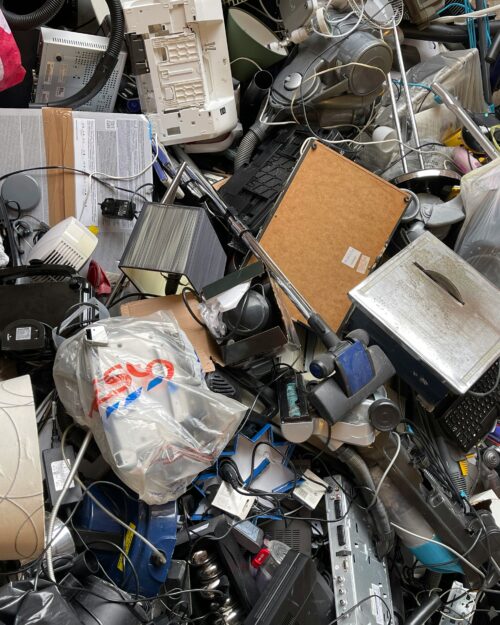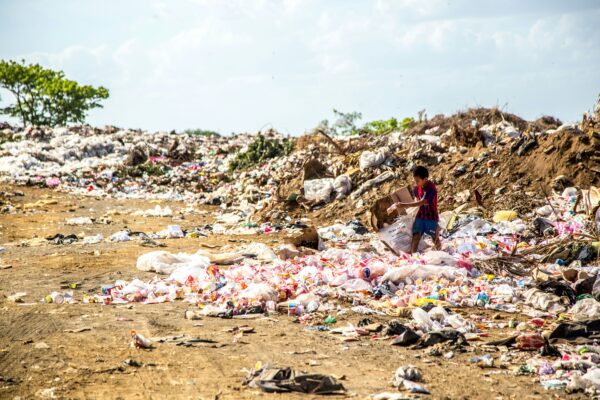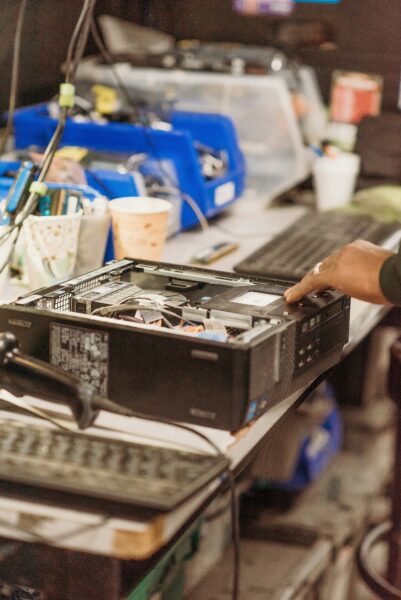March 18, 2024

By: AEOP Membership Council Member Ethan Zhou
Do you have an old phone, tablet, or another unused device collecting dust in your home? I definitely fall into this category. When electronics become unusable and need disposal, they become a form of electronic waste (e-waste). Sure, you can take them to your local Best Buy for disposal, but have you ever thought of what happens after that? The world is facing a mounting “tsunami of e-waste“- a term coined by the U.N.– as it is the fastest-growing waste stream in the world. According to a global study by the United Nations, the world generated 53.6 metric tons (Mt) of e-waste in 2019. This amount is projected to grow to 74.7 Mt by 2030. In fact, more than 2.5 million tons of e-waste generated by the U.S. is exported to countries in Asia and Africa. In these places, e-waste is not recycled properly and proves to be extremely hazardous to the environment. It is crucial that we facilitate the proper recycling of e-waste to ensure the recovery of the high-value metals that they contain and avoid introducing new threats to the environment.
 Recycling e-waste is a lucrative industry since it contains precious materials such as gold (Au), silver (Ag), copper (Cu), platinum (Pt) and many others. The management system market value of global e-waste was estimated at $52.6 billion in 2022 and is projected to reach around $160.2 billion by 2032. However, the recycling of e-waste is technically challenging due to the complexity of e-waste. Currently, only 17.4 percent of e-waste is formally collected and recycled globally. To recover the most value and meet the growing demand for metals, it is important that we heavily endorse the formal recycling of e-waste.
Recycling e-waste is a lucrative industry since it contains precious materials such as gold (Au), silver (Ag), copper (Cu), platinum (Pt) and many others. The management system market value of global e-waste was estimated at $52.6 billion in 2022 and is projected to reach around $160.2 billion by 2032. However, the recycling of e-waste is technically challenging due to the complexity of e-waste. Currently, only 17.4 percent of e-waste is formally collected and recycled globally. To recover the most value and meet the growing demand for metals, it is important that we heavily endorse the formal recycling of e-waste.
Additionally, e-waste contains over 1,000 harmful substances, including heavy metals like lead, mercury, and nickel, as well as toxic chemicals such as brominated flame retardants and polycyclic aromatic hydrocarbons (PAHs). Electronic waste takes up two percent of our landfills but accounts for approximately 70 percent of the toxic heavy metals in landfills. However, toxic e-waste is rarely recycled in its country of origin due to economic motivations; shipping e-waste to other countries is more cost-effective.
Due to a lack of technology, resources, regulations, and enforcement, most e-waste is not recycled formally. For example, in Ghana, a top destination for e-waste shipment, a mere 0.2 percent of e-waste was processed by formal e-waste recyclers. Informal recycling of e-waste poses serious environmental damage and health risks. For instance, one egg hatched by a free-range chicken in Agbogbloshie, Ghana, home to one of the world’s largest electronic waste dumps, contained 220 times more chlorinated dioxins than allowed by the European Food Safety Authority limits. These substances can cause cancer and damage the immune system. The World Health Organization estimates that as many as 12.9 million women and more than 18 million children are working in the informal waste sector, potentially exposing them to toxic e-waste risk.
So, what can we do? We must all take action to reduce the amount of e-waste being generated, educate others about the threat of e-waste, responsibly recycle e-waste, and invest in developing technologies to recycle e-waste effectively without burdening the environment. Personally, I am pursuing an independent project to research environmentally friendly methods for recycling e-waste as a science fair project.
Find a Volunteering Opportunity
Visit our Program Volunteers page for a tool to find the best opportunity for you.
eCYBERMISSION Mini-Grant
The eCYBERMISSION Mini-Grant is intended to support teachers/program leaders as they implement eCYBERMISSION with their teams. Educators (formal and informal) of students in grades 6-9 are encouraged to apply.
